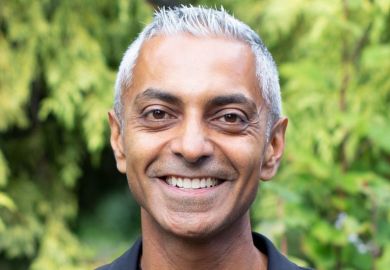The 1990s have seen a growing interest in the field of ageing among policymakers, the media and latterly academics. Alarmist concern about the growing proportion of older people in the population and whether the country is able to afford the projected costs of pensions and health expenditure is a recurring theme in media reports and political debate. This contemporary debate has been largely uninformed by academic research, partly because of fragmentation: many disciplines have a marginal interest in ageing, but none has it as a central concern.
This collection of books reflects the multidisciplinary nature of ageing research. In what other field would a sociologist be asked to write a review based on books by a molecular geneticist, a historian, a lawyer with expertise in economics and a specialist in reproductive medicine? These books also differ in their intended audience. Roger Gosden's and John Medina's are written for the nonspecialist, while those by Richard Posner and Andrew Achenbaum are are likely to hold little interest for the nonacademic.
Posner's book is a tour de force, embracing biology, psychology, economics and sociology within an overarching framework of human capital theory. As a chief judge of the United States Court of Appeals and senior lecturer at the University of Chicago law school, he inevitably brings a legal focus to his treatise on ageing and the aged. Posner is an example of Renaissance man: remarkably widely read and equally at home discussing Aristotle's psychology of older men, economic theory and philosophical issues relating to euthanasia. Readers with little interest in human capital theory will be engaged by the elegance of his debates and the breadth of material woven into his theme.
Posner takes issue with much contemporary economic theory and proposes a reformulation of human capital models to take account of ageing. He discusses posthumous utility, whereby decisions taken before death may not have utility for the present self but do so for the individual's reputation after death, for example, a stoical demeanour at the time of death or posthumous fame, whether from publishing a book or as a martyr. With increasing age, considerations of posthumous reputation loom larger in the rational individual's utility function. Posner's redevelopment of conventional notions of human capital includes social human capital, comprising the network of social contacts and the individual's good reputation, which increases the individual's value to the work organisation.
An often overlooked distinction is between the effects of ageing and of length of time in a job. Many so-called ageing effects in practice reflect the boredom and burnout of undertaking repetitive tasks associated with prolonged periods doing the same work. He illustrates the distinction between time-related and ageing-related changes by referring to judges appointed late in life who retire later in contrast to judges appointed younger who retire younger.
More controversial is Posner's suggestion that we have "multiple selves", such that individuals have different preferences at varying stages of their life. He argues that in some senses the present and future self are separate persons, and that our present self often does not consider the implications of current actions for the future self. Although there are elements of circularity in his argument, it helps to explain the lack of planning for retirement among younger individuals, and the fallacy of the present government's assumption that rationality will result in everyone providing sufficient financial resources for their own retirement. Posner's analysis suggests this is wishful thinking.
He examines a range of age-related policy issues, for example assisted suicide and older people as victims and perpetrators of crime. He demonstrates that the US Age Discrimination and Employment Act was a response to a largely non-existent problem and probably harms more than it helps older workers. The result has been later retirement among those who derive the greatest nonpecuniary utility from continuing to work. Professors are singled out as a group who retire later, because they have low costs of working and high nonpecuniary benefits.
This brave book postulates both physical and cognitive decline with ageing. It provides a clear discussion of why we should not be alarmist about the increase in the number of elderly people, focusing on the meaning of dependency ratios and the role of older people in nonproductive work. He demonstrates that the ageing of the population is much less of a social and economic problem than is commonly assumed. Society has been acutely aware of the costs of an ageing population but has tended to overlook the benefits.
Achenbaum has written an unashamedly academic history of the origins and development of gerontology, from his vantage point as professor of history and deputy director of the institute of ageing at the University of Michigan. Medicine, compared with the social and behavioural sciences, has clearly been in the ascendancy in research on ageing since the 1960s. Achenbaum chronicles the intellectual history of the field, examining the conflicts and alliances, the role of powerful researchers and funders. His history of individuals and institutes of ageing may be of little interest to the average reader, but this provides a timely reminder of the difficulty of undertaking truly interdisciplinary research.
Crossing Frontiers highlights a transatlantic difference in the centrality of ageing within the academic world and in research funding. In the US, there are many academic institutes of ageing, while the research budget of the government-funded National Institute of Aging was $146 million in 1987 and that year private foundations gave $31million to ageing research. A key question is why ageing has a much higher profile in teaching and research in the US than in the UK.
The remaining two books are writtenwith the layperson in mind. The science is simplified to a basic level. John Medina is a molecular biologist from the department of bioengineering at the University of Washington school of medicine. In The Clock of Ages, he argues that the biological processes of ageing are occurring all the time, but increasingly science is able to arrest or turn back some of the effects. The metaphor of a clock has been widely used to signify the passage of life, and here the clock refers to the possibility of winding back the years or slowing down the inexorable tick of time.
The book is full of fascinating insights: dogs and cats that are sterilised live an extra two years on average, while elephants and chimpanzees raised in captivity have only half the natural life span of those in the wild. It raises innumerable questions and seeks to answer them. Why do different animals have different life spans? Why does my hair turn grey? Why does my skin wrinkle as I get older? These are all answered from the perspective of tissue and cell changes. Key concerns include whether there are genes that cause cells to die or to extend their life span. The biological focus is interlaced with descriptions of the ageing of historical figures like Napoleon Bonaparte.
Roger Gosden's book, Cheating Time, also has an underlying concern with turning back the effects of ageing and manipulating biological processes to extend human life. Gosden achieved popular notoriety in 1994 when he used foetal eggs to stimulate egg production in infertile women, and contributed to the debate about reproductive technologies to assist postmenopausal women to have children. Gosden, a professor of reproductive sciences at the University of Leeds, has aimed his book at the popular reader, arguing there is no need to accept the inevitability of decline and revealing at times a brave new world of technological manipulation.
Gosden explores the realms of reproductive biology, saying that there is a trade-off between our reproductive capacity and our life span, and that sex hormones are crucial to general youthfulness. His aim is to "cheat" the ageing process, by living longer, preserving fertility until later in life, and delaying the onset of degenerative disease. The reproductive organs are seen as crucial because they are among the first parts of the body to show their age, with sex hormone levels affecting changes in many other parts of the body. Procreation and degeneration are seen as opposite sides of the same coin.
Although the quest for the "elixir of life" is characterised as the ultimate folly, Gosden's premise is that in some ways this can be accomplished. But it is hard to know what conclusions about humans the reader should draw from his discussion of a range of animals and types of experimental studies, for example, that fruit flies bred from older mothers themselves live longer and breed for longer.
There are many insights from this collection of books, but some could have been developed further. It is important to note that biological ageing cannot simply be read off chronological age, and people today are biologically younger at a given age than in the past. But there is no discussion of the extent to which biological age varies between people of different social classes: that professors at age 80 are biologically healthier than retired miners. The implications of new scientific advances attempting to prolong life and a youthful appearance are likely also to increase inequalities in ageing (and the time of death) among social groups in society.
The lack of attention to gender differences among older people is a general omission in these books. Posner, for example, discusses the psychology of older men, the retirement of judges and the high suicide rate of older men, paying scant attention to older women. This one-sided perspective is of particular concern since older women outnumber older men, with three times more women than men above age 85. The authors tend to characterise older people as a homogeneous group, reinforcing an ageist perspective of "us" - people of working age, versus "them" - the elderly. It would have been refreshing if these authors had addressed more explicitly the social bases of difference among older people and to what extent contemporary changes and developments are likely to exacerbate these inequalities.
Sara Arber is professor of sociology, University of Surrey.
The Clock of Ages: Why We Age, How We Age, Winding Back the Clock
Author - John J. Medina
ISBN - 0 521 46244 4
Publisher - Cambridge University Press
Price - £16.95
Pages - 332
Register to continue
Why register?
- Registration is free and only takes a moment
- Once registered, you can read 3 articles a month
- Sign up for our newsletter
Subscribe
Or subscribe for unlimited access to:
- Unlimited access to news, views, insights & reviews
- Digital editions
- Digital access to THE’s university and college rankings analysis
Already registered or a current subscriber?



